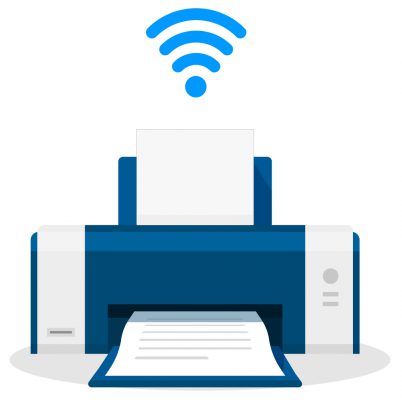Hard-won Victories and Lessons Learned During the Pandemic
Posted on August 20, 2021 at 6:00 am
By Dana Mannino

There is no sugarcoating how hard this pandemic has been for all of us, and for some, more than others.
It is also true that the pandemic has forced us to think in new and creative ways. For us at the library, we’ve been focused on how the library can serve you.
Without minimizing the negative impact that the pandemic has had on our lives, I’d like to take a moment to share some of the ways that I think the pandemic has changed my librarianship for the better.
I’ve become an aggressive reader’s advisor.
Librarians call the act of helping a customer find a good book “reader’s advisory.”
Before the pandemic, I was a very timid reader’s advisor. I might casually leave a few books out in sight of a family I overheard looking for funny picture books, but in general I wouldn’t begin a book conversation unless a customer approached me or looked confused.
Then came the pandemic—a yearlong boot camp for reader’s advisory.
It started with a bang the last day I worked before the shutdown. Schools had just been closed, and we were about to follow suit. The library was packed with people. It was like a Black Friday for libraries.
Everyone wanted something to keep their kids busy during the closure. One smart grandmother showed up with a wagon to haul home books in. And I spent my entire shift advising readers.
While the library was closed, no one could browse the shelves to find new reads. People quickly discovered how limiting it is to only read books you’ve already heard of. Enter Book Butler.
To use Book Butler, customers fill out a form describing their reading tastes, and we place several books on hold for them. When we rolled out the system, which also used curbside service, we received 35 requests in a single day. I spent a full shift responding to them.
Boot camp continued this summer with Summer Reading by Mail. We collaborated with schools to identify struggling readers who weren’t likely to make it into the library. With help from their parents, we found out what they like to read. All summer, we’ve been sending them regular shipments of books they might like.
So, after all this virtual practice, I’ve become a rather aggressive reader’s advisor. As soon as a person is in front of me, I jump right in: “Are you finding what you like? Oh! I love Mo Willems! Have you tried Jan Thomas?”
I still respect non-verbal cues indicating that my unsolicited reading advice is unwelcome, but I’ve found this to be the exception, not the rule. I think the shutdown has made us value in-person interactions more highly. The library is more than a book warehouse. It’s a place to interact with people about your favorite hobby—reading!
(If you are curious about the tools librarians use to become excellent reader’s advisors, check out Novelist, Literature map, or gnooks.)
I know when to use virtual programming.
Zoom fatigue is real, and I can hardly wait to get back to in-person programs. But it appears that there are situations where virtual programs are actually better than in-person ones.
For example, last spring we scheduled several in-person workshops for parents about helping their young children grow up to have healthy dating relationships. The program generated a lot of excitement… but only two families showed up.
Then COVID-19 struck, and we moved the workshop online. Thirteen parents signed into the online program. So, there may be information out there that you need, but you don’t need it badly enough to put on pants, or maybe a screen is a more comfortable way to talk about uncomfortable topics. Either way, I’m happy we can now connect you to live experts from the comfort of your home.
Intergenerational programs also seem to do better online, which makes sense. There comes a time when teenagers are extremely uncomfortable appearing in public with their parents. But a teen might be willing to beat their parents at a virtual cake decorating competition in the privacy of their own kitchen.
Also, there comes a time when bending over to tie shoes becomes difficult for a grandparent. But shoes are not required if grandma and granddaughter are crocheting together over Zoom. In the before times, we were often asked for programs that could truly be for all ages, but attendance lagged. Our virtual “Nailed It” programs, on the other hand, always have a waitlist.
Will families continue to turn out for online programs when we enter the new normal? I don’t know, but many of them have been fun so far.
I can help customers with their home computers.
We’ve had the Book-a-Librarian service for a long time. Before the pandemic, Book-a-Librarian meant that customers could schedule one-on-one help for a lot of different topics. Common ones included getting apps to work on a new smartphone, learning to fill out job applications online, and using the resources in our Digital Library to help with research. And all of these appointments were in person.
During the pandemic, we knew people still needed help, especially with filling out unemployment claims online, so Book-a-Librarian went virtual.
Virtual Book-a-Librarian sessions have opened up whole new worlds for us. Before when people had difficulty getting their eBooks to download on their home computers, all we could do was write down instructions and hope they made sense once the person got home. Now we can meet online in an interactive session and see the problem firsthand with screensharing.
An online meeting environment like Zoom may sound like the wrong tool for helping someone who is having issues with technology, but this is another way that the pandemic has changed us.
Most adults, including grandparents, can use Zoom. And if they can’t, I’ve got a work around. On the day of the appointment, I usually call the customer on the phone and talk them through the process of joining the Zoom meeting. Once they are in the online meeting platform, we hang up from the phone call and use Zoom for the rest of the appointment.
Using Zoom, or any new technology, can seem scary the first time, but my rule of thumb is that if you can check your email, you can use Zoom.
While the library can’t fix your home computer, we can help you learn how to use it. And now you don’t even have to leave your house. Last week, I helped a patron recover her Amazon account so that she could purchase her medical supplies.
Customers can print straight from their phones.
The library’s Information Technology (IT) department deserves a medal. When the pandemic hit, staff in our IT department became busier than ever putting new infrastructure in place so that librarians and other staff could work from home. And suddenly several technologies that had been planned for a future roll out became “we-need-it-yesterday” items.
Mobile printing was one of these technologies. During the pandemic, getting mobile printing up and running was important so that customers could send in print jobs from home.
Today’s in-person customers also reap benefits because they no longer have to log into a library computer to print a shipping label or a recipe. They can send their print job straight from their phone.
This is important if, like many customers, you only access your email on your phone (and your email password is long forgotten). Getting a shipping label or other print job out of a locked email account can feel like getting gold out of Fort Knox. I am grateful for this innovation every day.
The pandemic has been rough, and each new wave can be demoralizing. But this is even more reason to celebrate our hard-won victories. They can’t make up for what has been lost, but the victories and lessons are reason to be proud. I believe we will get through this.




